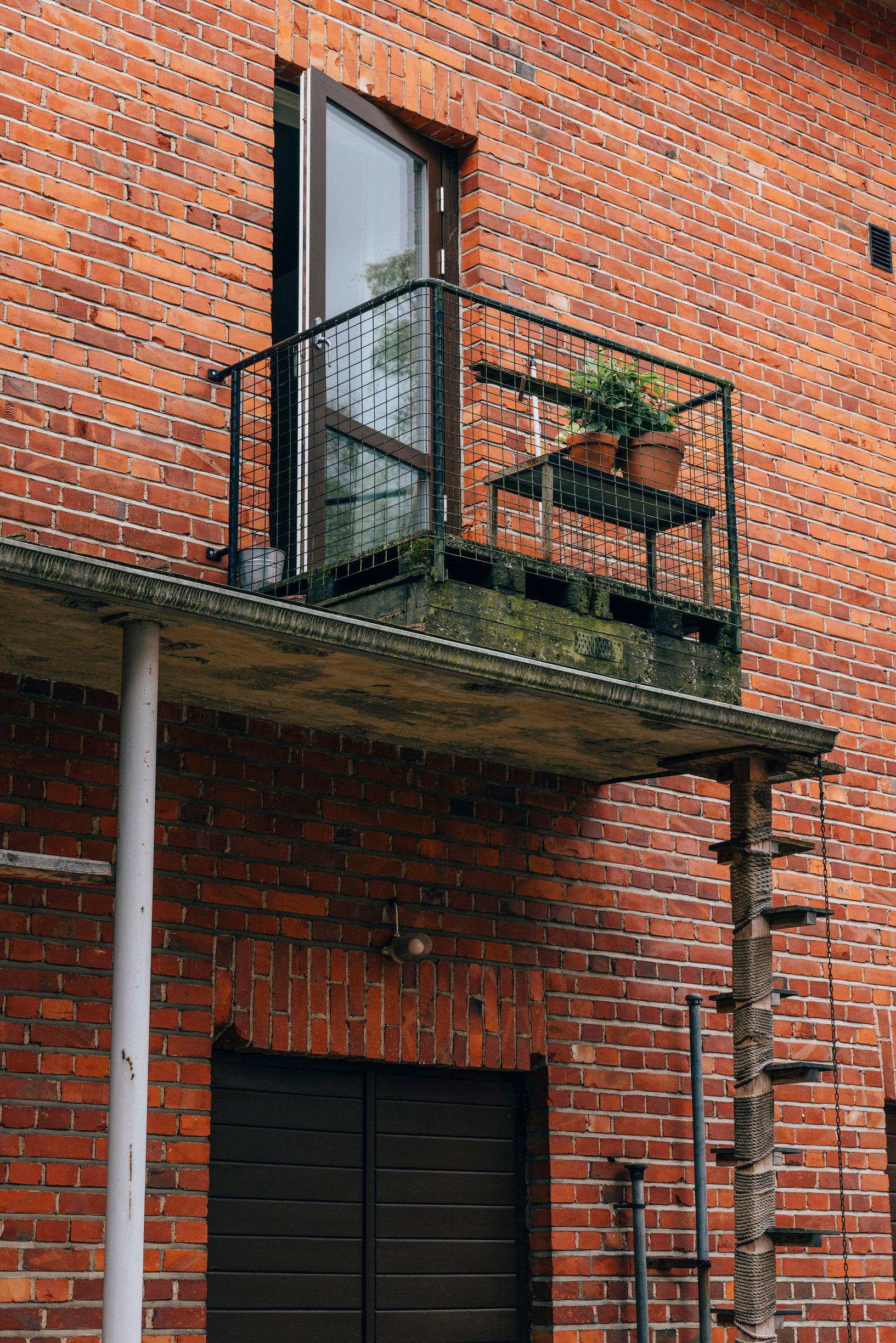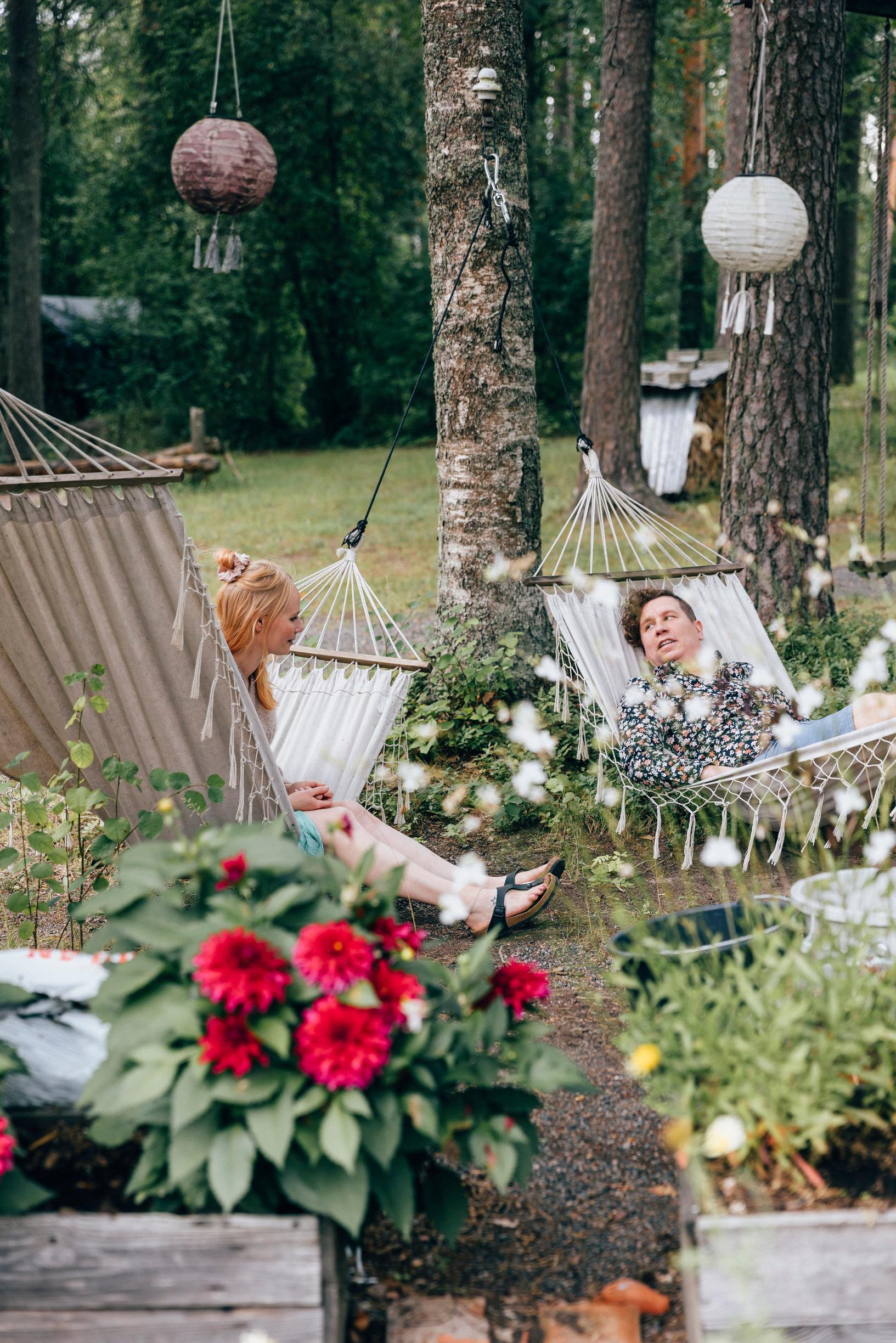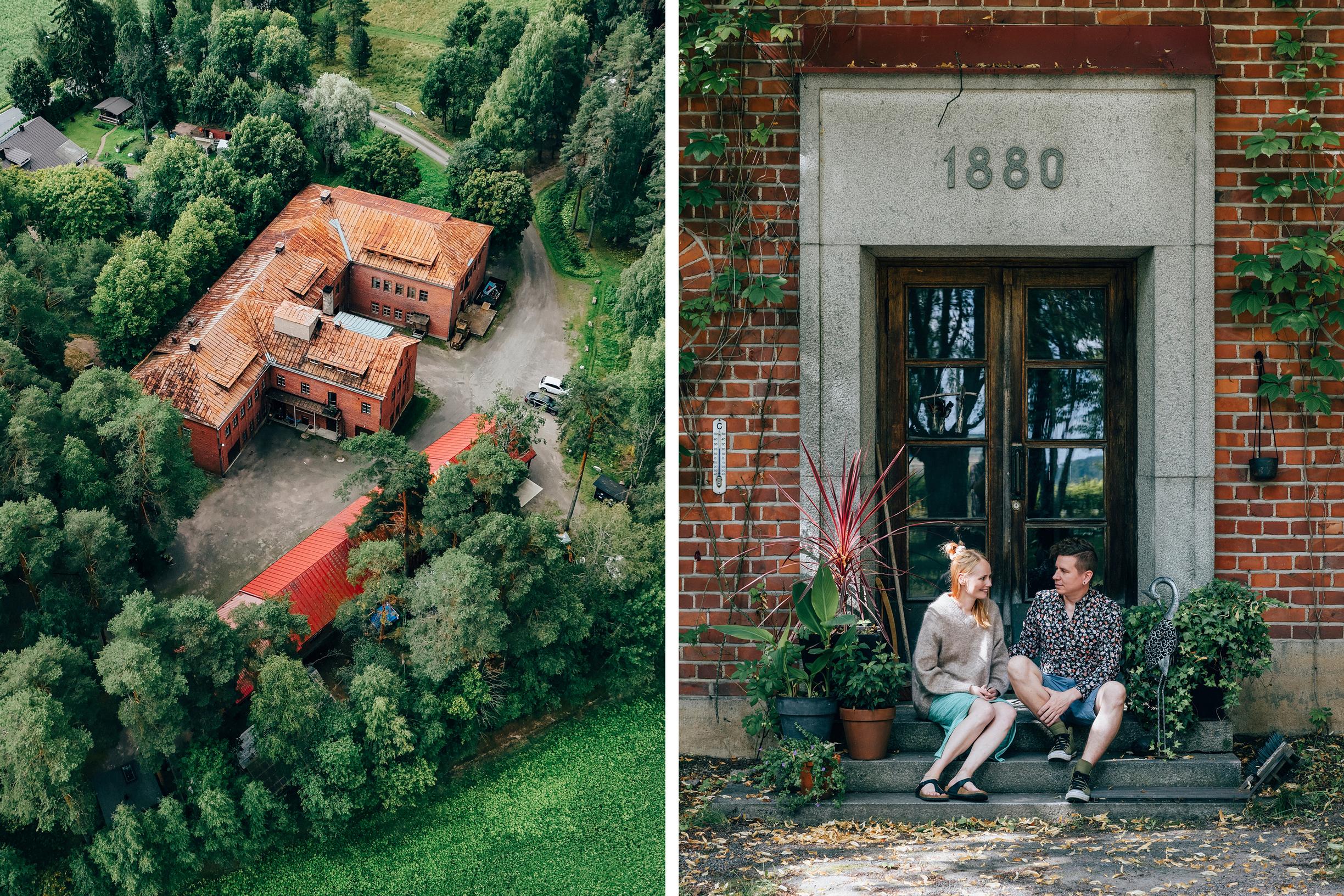
This old leather factory needed near round-the-clock renovation for seven years—“Our youth protected us,” say Janita and Otto now
During their trip around the world, Otto and Janita bought an old leather factory. The rugged setting pays homage to the past and shelters the couple’s dream loft home within its thick brick walls.
This old, sturdy leather factory seems quiet, even though people have been living inside its thick brick walls for more than a decade. The calm rural atmosphere is briefly broken by a rooster crowing in the middle of the day.
If you look above the main entrance, you can still see the year 1880, when tanner Salomon Waara set up his workshop here. At the time, there was only a large main cabin and a two-room soldier’s cottage with a few outbuildings.
A few years later, a new factory building was erected on the property. The first machines were brought in, and more workers were hired. Reportedly, Napiala’s leather factory was the country’s second oldest mechanized leather factory.
As demand continued for horse harnesses, backpacks, mittens, and other leather products, Waara’s son—who carried on the business—built the brick factory building in 1937. It was expanded to its present form around the turn and midpoint of the 1950s.
Originally, the factory was T-shaped, and after the expansion it became F-shaped. The façade, roof pitch, and window frames are now protected.
“The south wing is the extension, but from the outside you can barely tell. Some windows may look a bit different. You can see in the extension that, during shortages, they saved on wood for roof trusses and reused concrete form boards as roof battens,” Otto Kokko says.
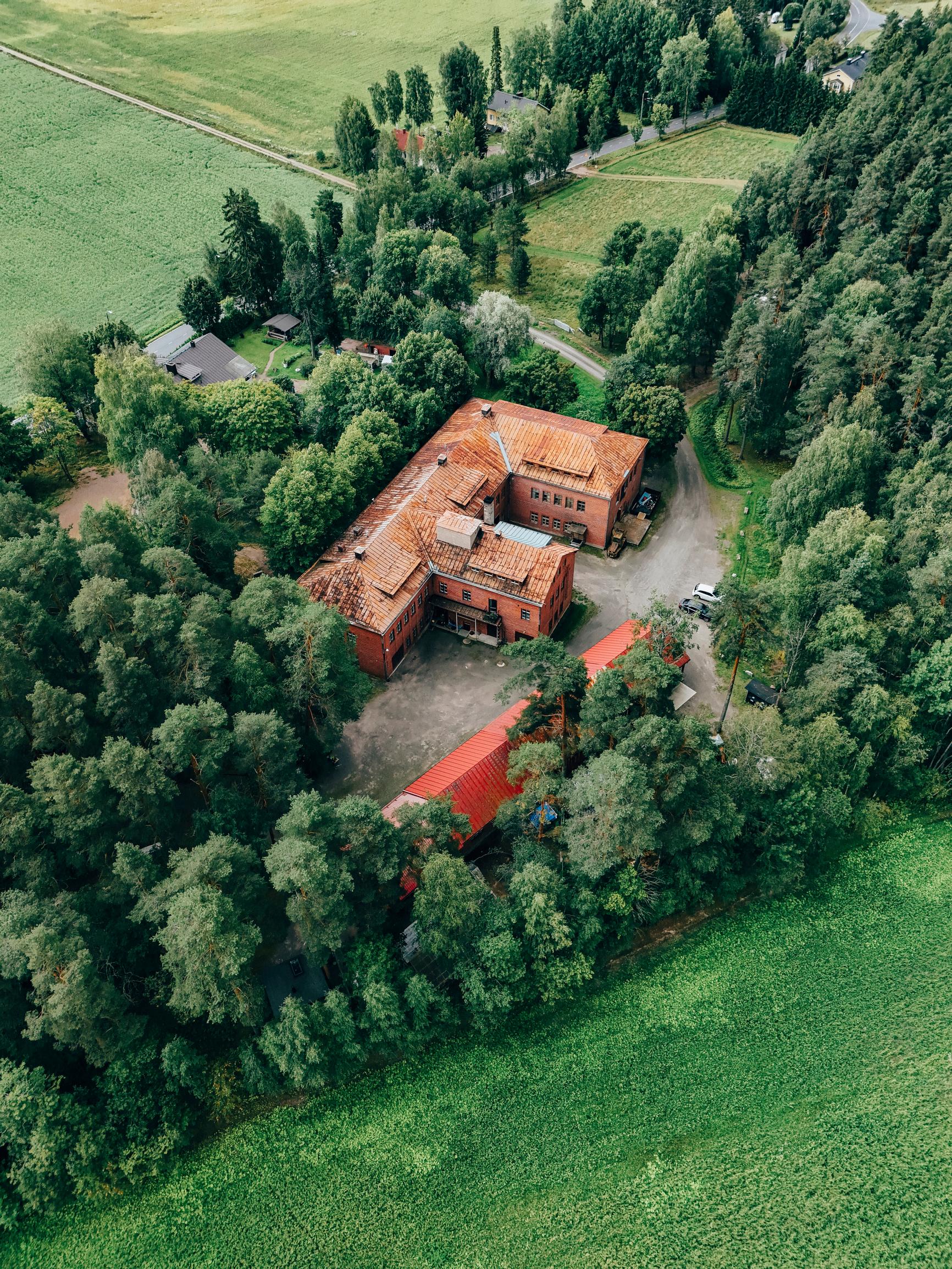
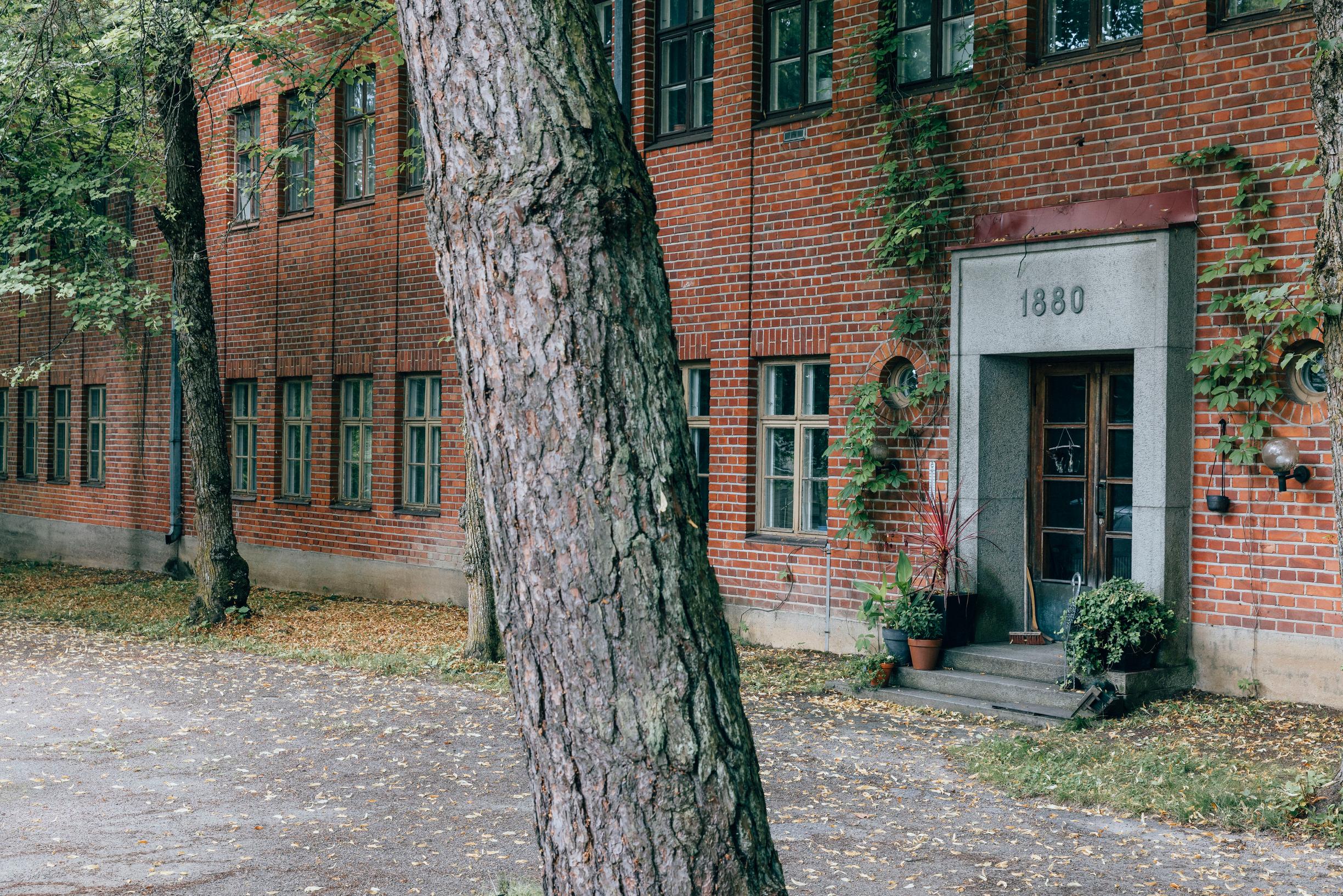
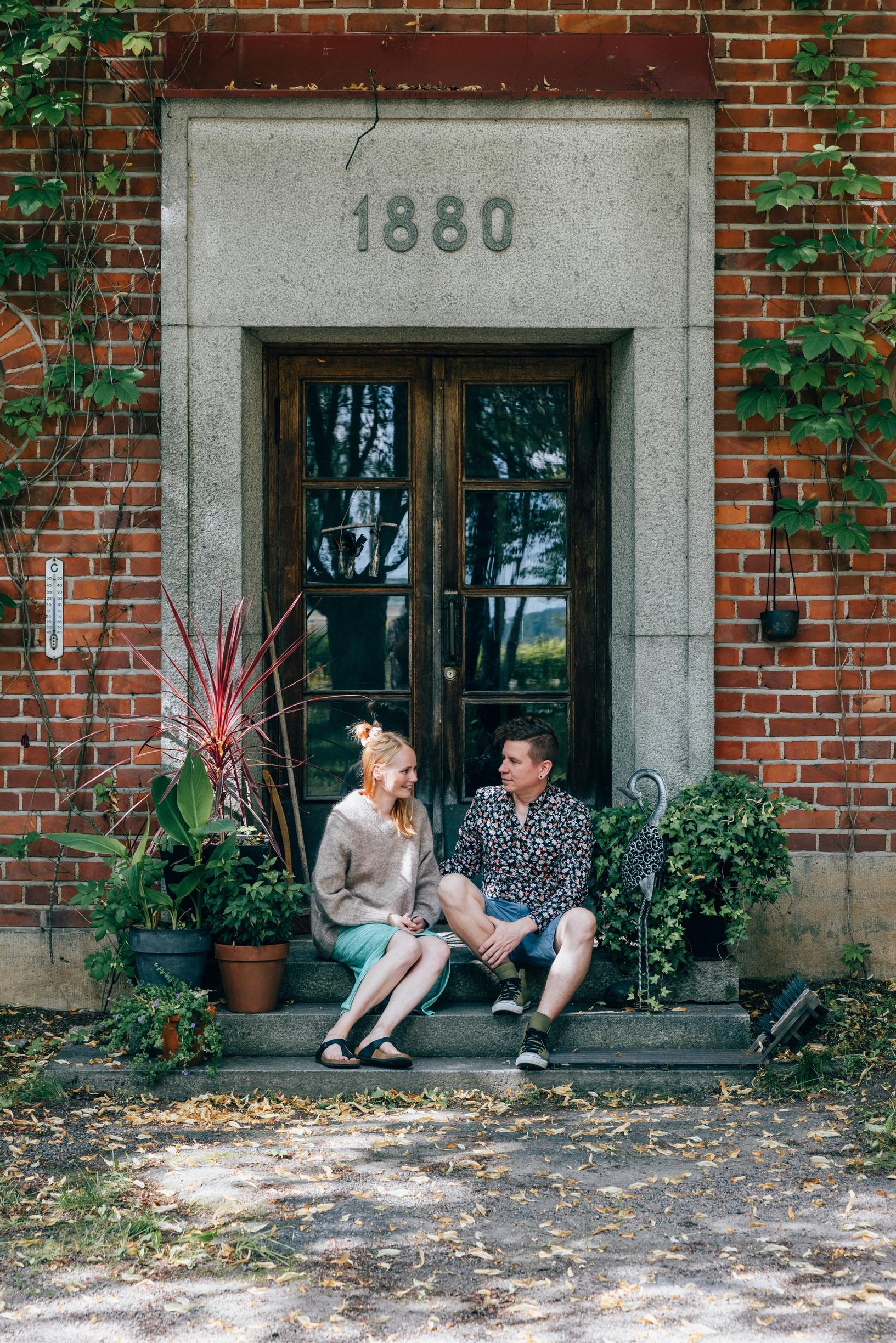
The factory closed in 1991, during a recession, and its movable property was auctioned off. Demand for leather had declined, partly because of increased car use.
“You can still sometimes catch the smell of leather in the attic, especially in summer. Once, someone even called to ask if we still made horse harnesses,” Otto laughs.
“This is not just our home; it’s also our workplace and way of life. Otherwise, it wouldn’t make sense for us to keep it.”Otto Kokko
Otto lives in a loft apartment at the factory with his spouse Janita Horppu. He works full-time as the property’s landlord, caretaker, and farmer. Janita teaches and looks after their menagerie, which includes a couple of cats, chickens, three roosters, two peafowl, sheep, and three mini pigs.
“Our life revolves around this property, its people, its animals, and nature. We live by values that see every being as equally important. Many of our animals have been rescued from slaughter or would otherwise have been put down,” Janita explains.

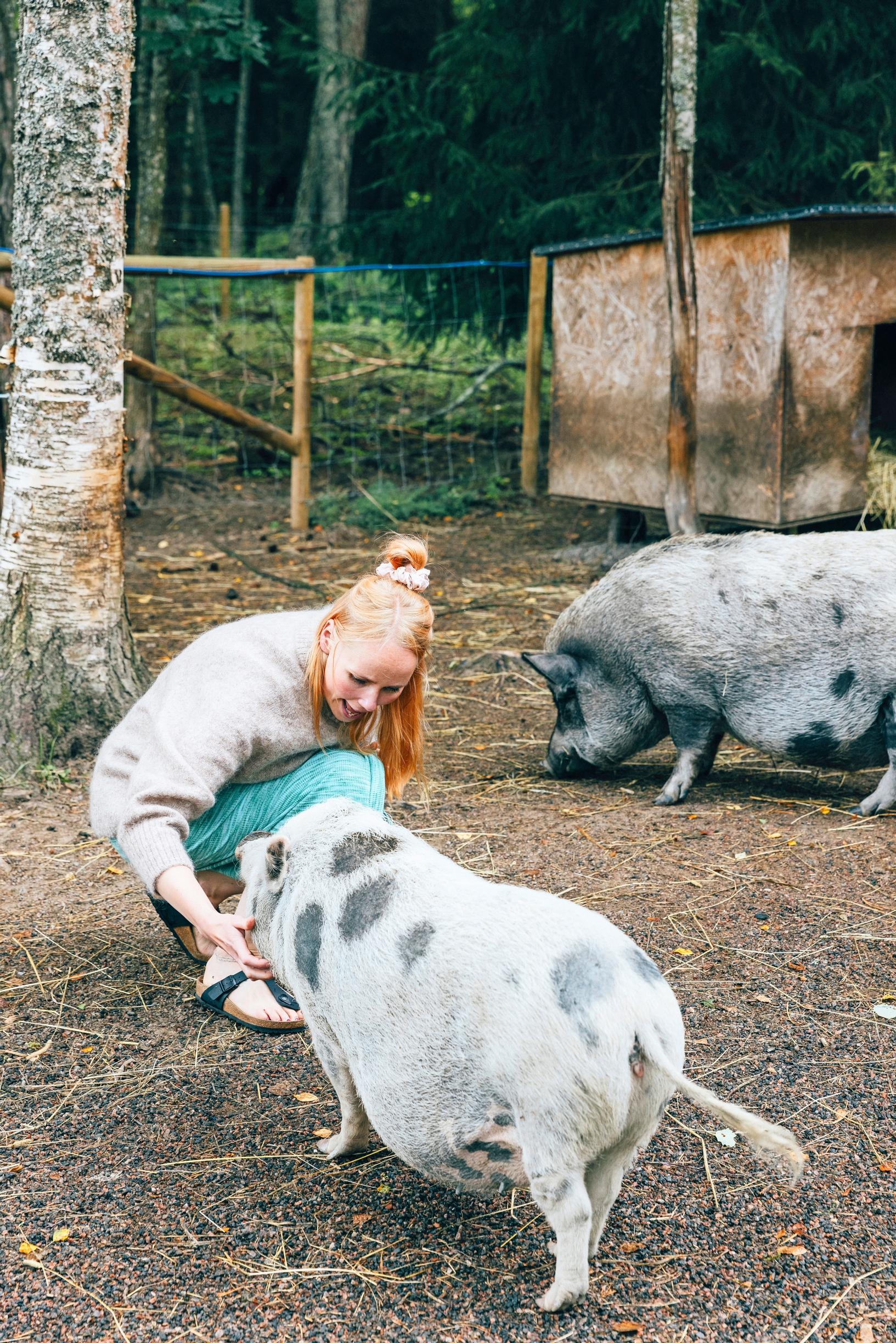
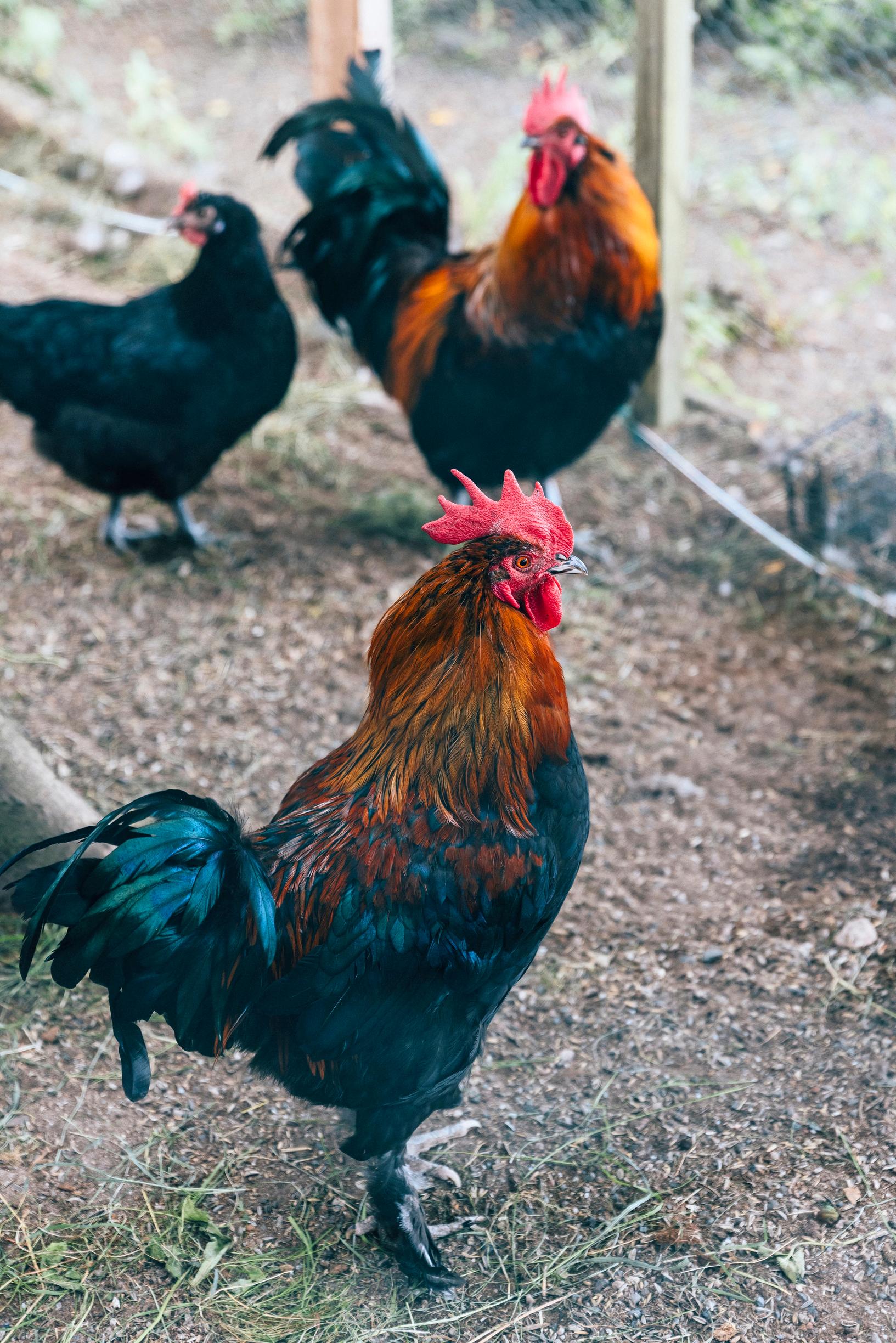
In the old factory, there’s always something to do, since each of its three floors spans about 900 square meters.
Otto has worked in construction and enjoys renovating and working with his hands. If he gets excited about an idea, he acts on it quickly. You can’t miss the personalized, treehouse-inspired sauna in the yard, check it out here.
The first floor has rentable office, hobby, and storage spaces. Two apartments are also rented out.
“It’s not just our home; it’s our workplace and our way of life. Otherwise, it wouldn’t be worth keeping,” Otto sums up.
Originally, they weren’t enthusiastic about owning an entire former factory, but the thought of having a loft apartment appealed to them. Otto knew exactly what they were getting, because this was his childhood home.
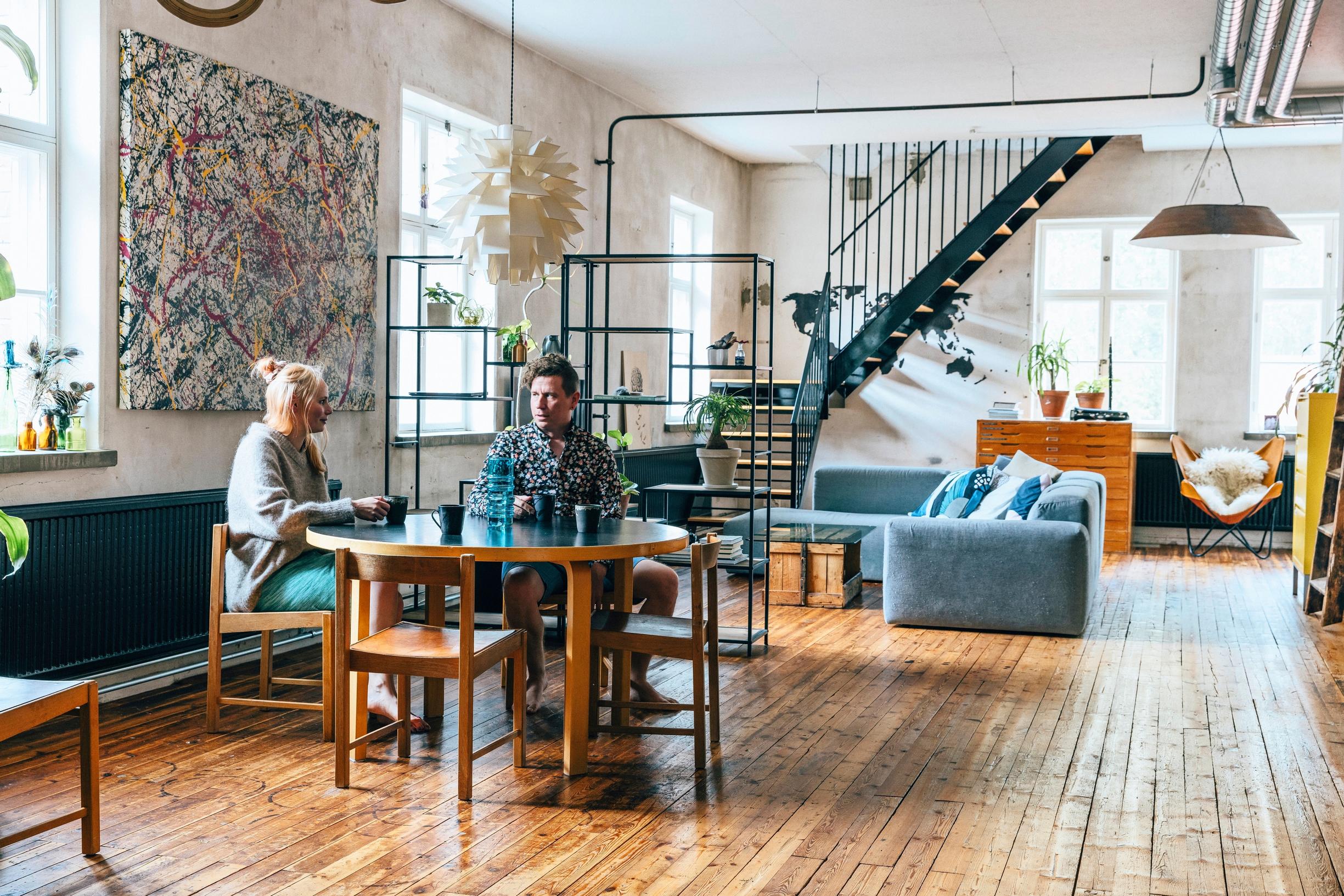
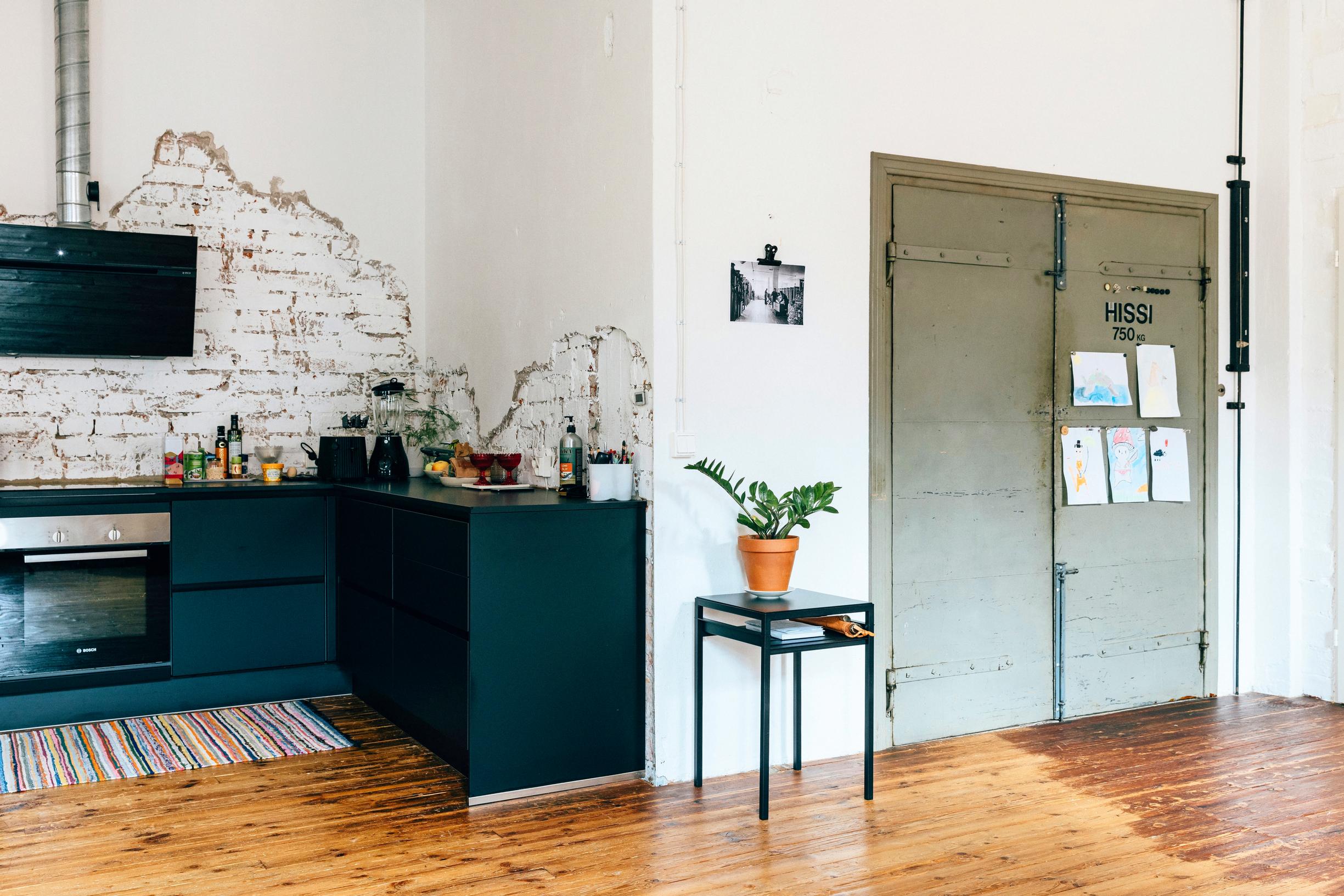
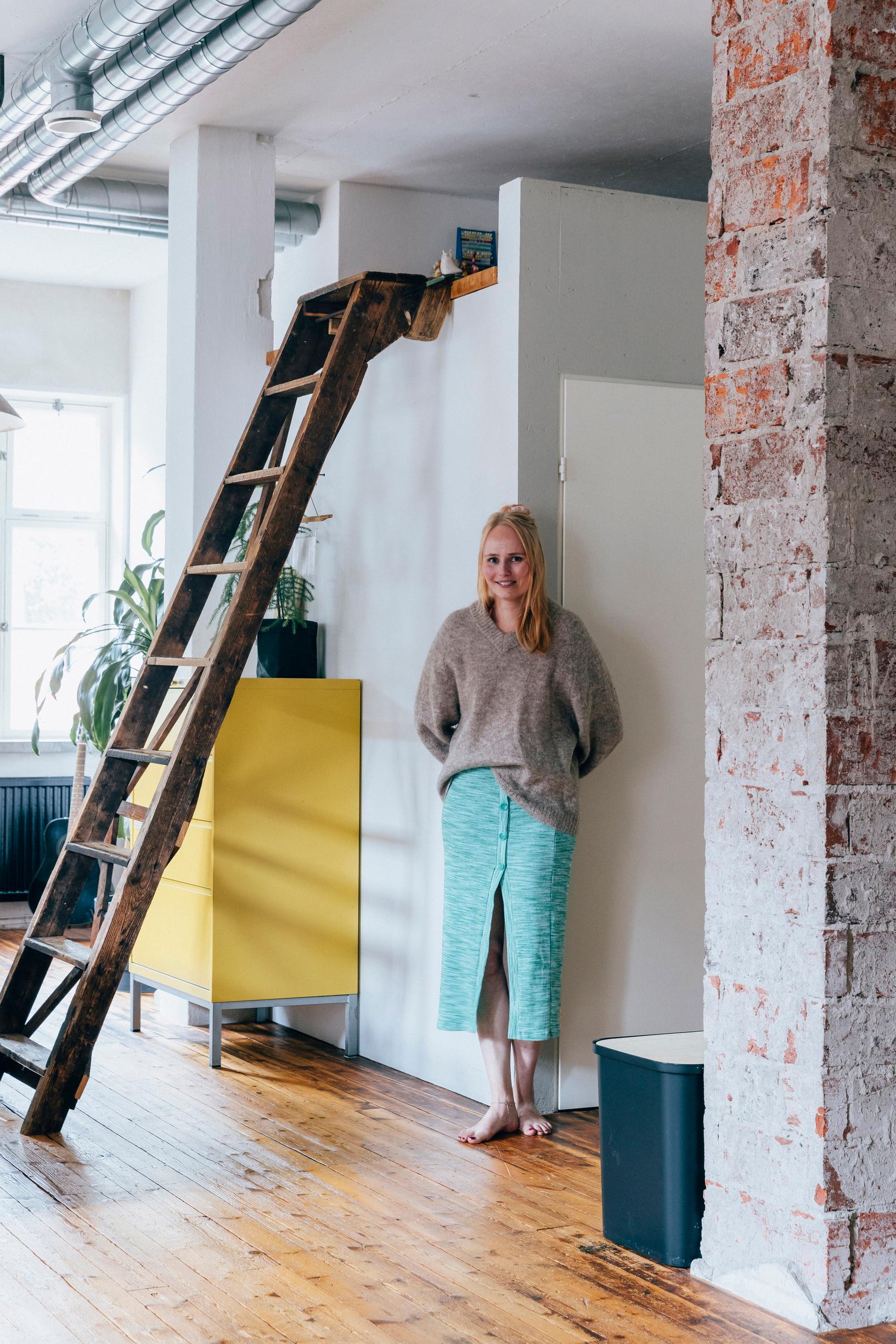
Otto’s father bought the property in the 1990s and opened a bakery in the renovated downstairs. Moving farther from his friends in his last year of elementary school was hard, but the new home felt inspiring.
The family lived in a former office space on the second floor. Otto and his siblings had plenty of room for their hobbies: his brother built a skate hall, and sometimes their middle school class came to play floorball. Otto’s parents set an example to him and Janita in their courage and enterprising spirit.
Janita has always been intrigued by factory settings, architecture, and the beauty of old buildings. She remembers feeling a sense of romance about buying the factory.
“Maybe I didn’t fully realize what it would require in practice. We were young, and that protected us, because at that age you just live in the moment.”
The sales contract was signed after Otto’s parents flew to the Philippines, where Otto and Janita were backpacking. Before that, they had quit their jobs, sold their apartment and other possessions, and stored away what remained, with no return ticket. They worked summers and escaped the cold as far as they could without flying.
For the first seven years, they barely stopped renovating. The constant pace eventually took a toll on their bodies and minds.
They returned from their travels straight to their new attic home in the factory. Now, the home helps keep them grounded.
When Janita and Otto moved into their distinctive home, nature had already started to reclaim the surroundings. The property had barely been used, and many spaces were nearly empty for a couple of years. They first intended to build several apartments in the factory, until they decided on rental storage units instead.
For the first seven years, they worked on renovations almost day and night. The demanding schedule took a toll, and Otto did most of the building work while Janita helped after her day job.
Slowing down helped them find a better balance between work and leisure. Leisurely mornings, relaxation, and living in the moment became part of everyday life.
“Even though this place always needs work, we decided we have to take it easier sometimes. The work isn’t going anywhere,” Otto notes.
Their home is a bright loft apartment they created a few years ago by combining a downstairs unit with the attic. Their living space doubled to just over two hundred square meters.
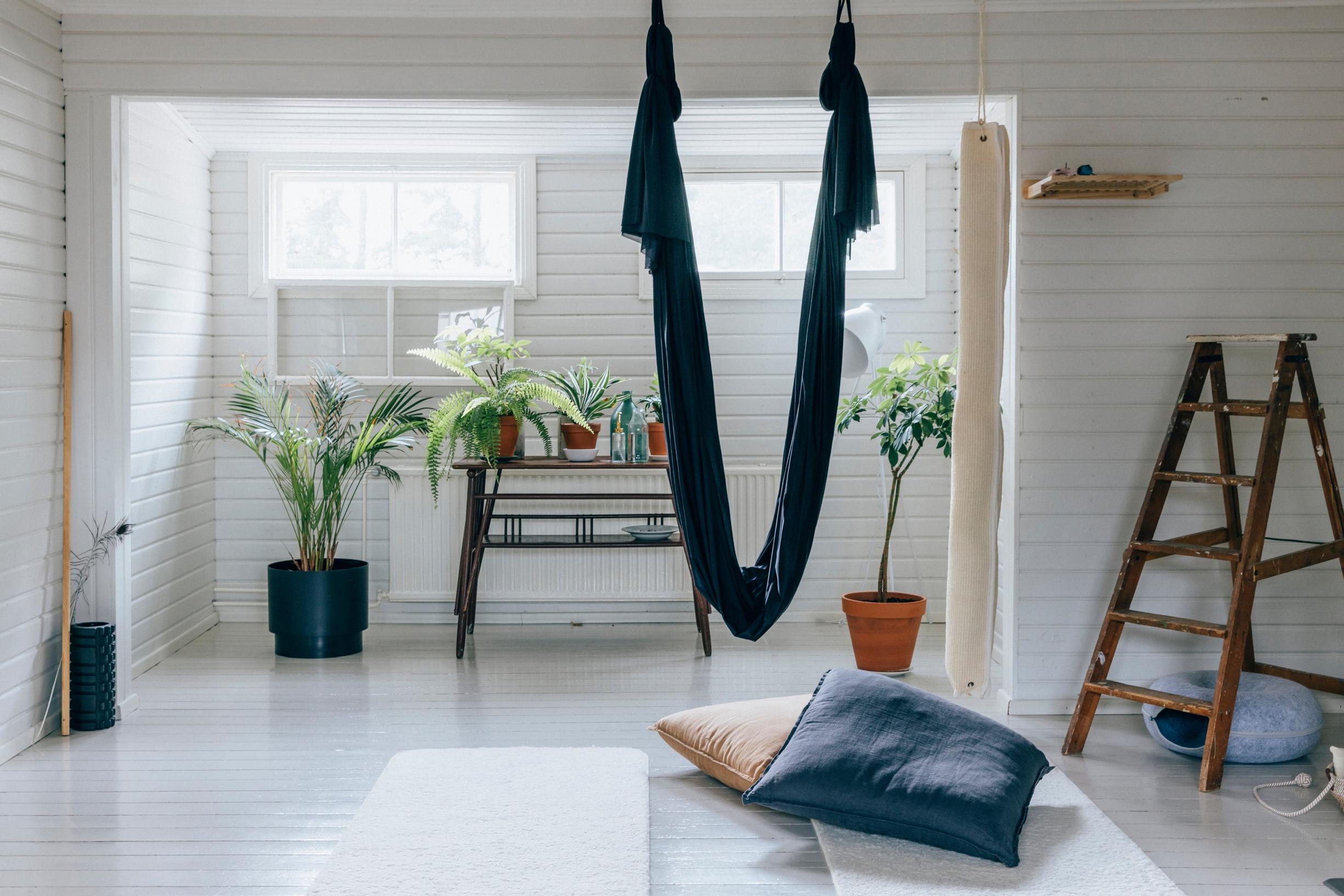
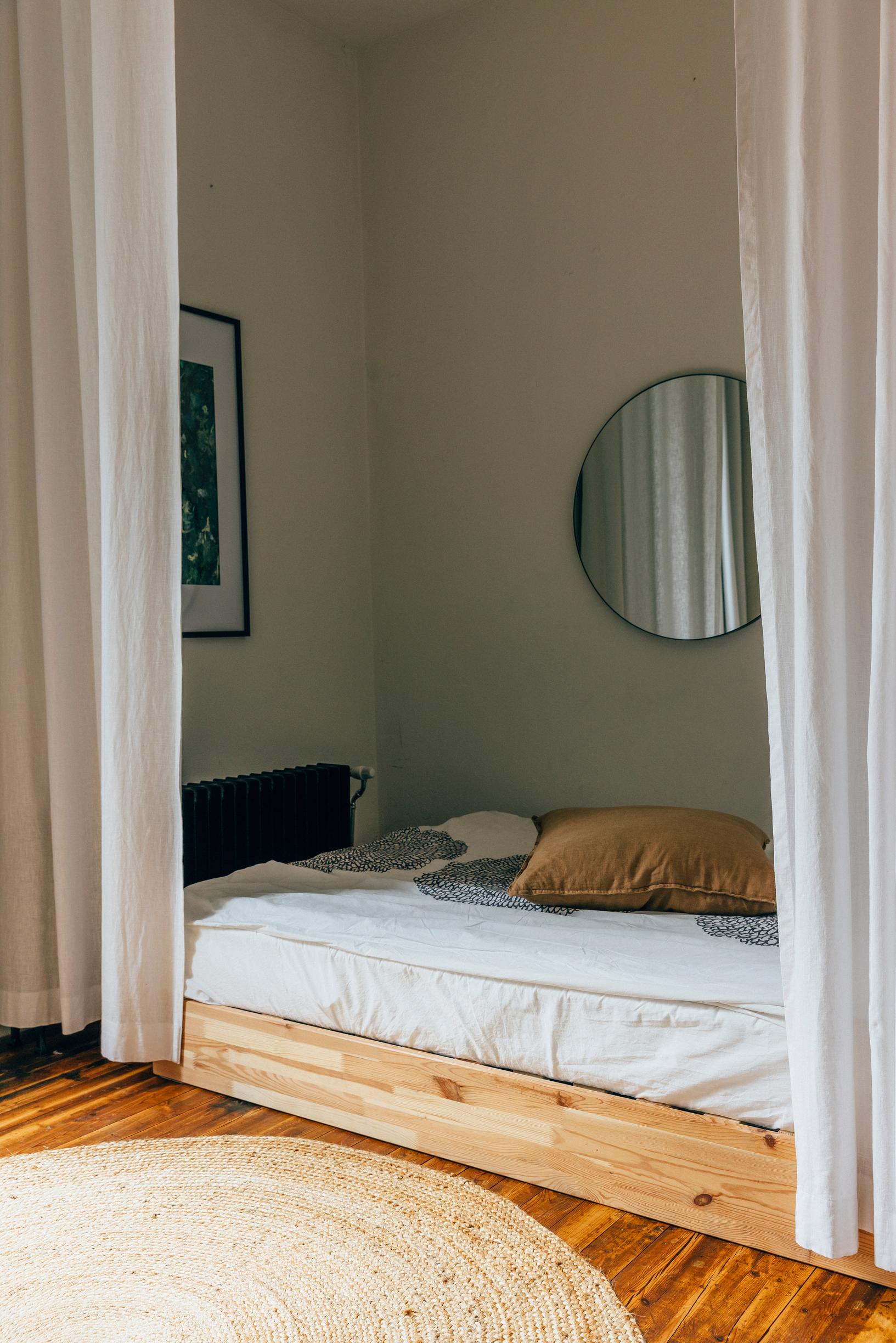
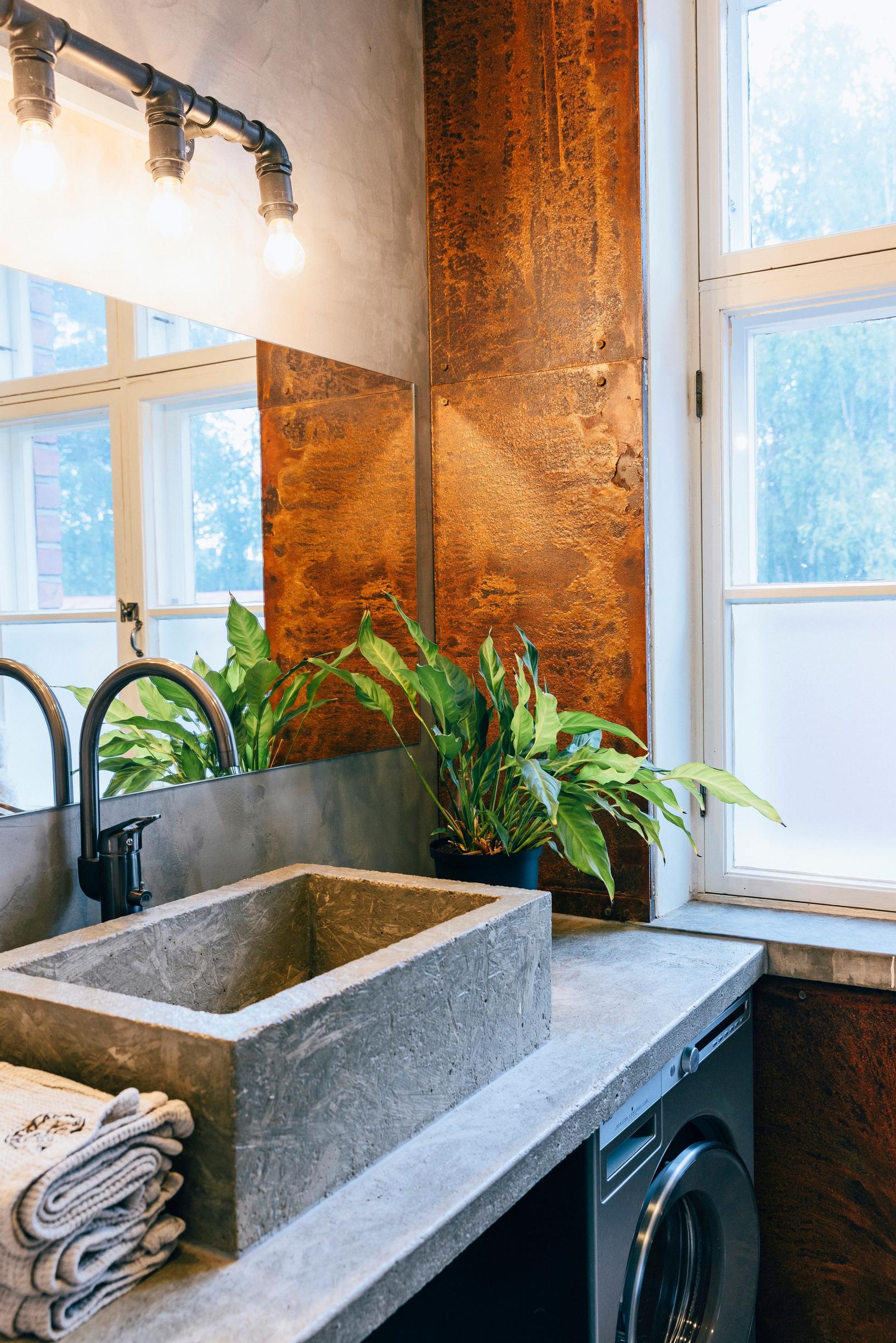
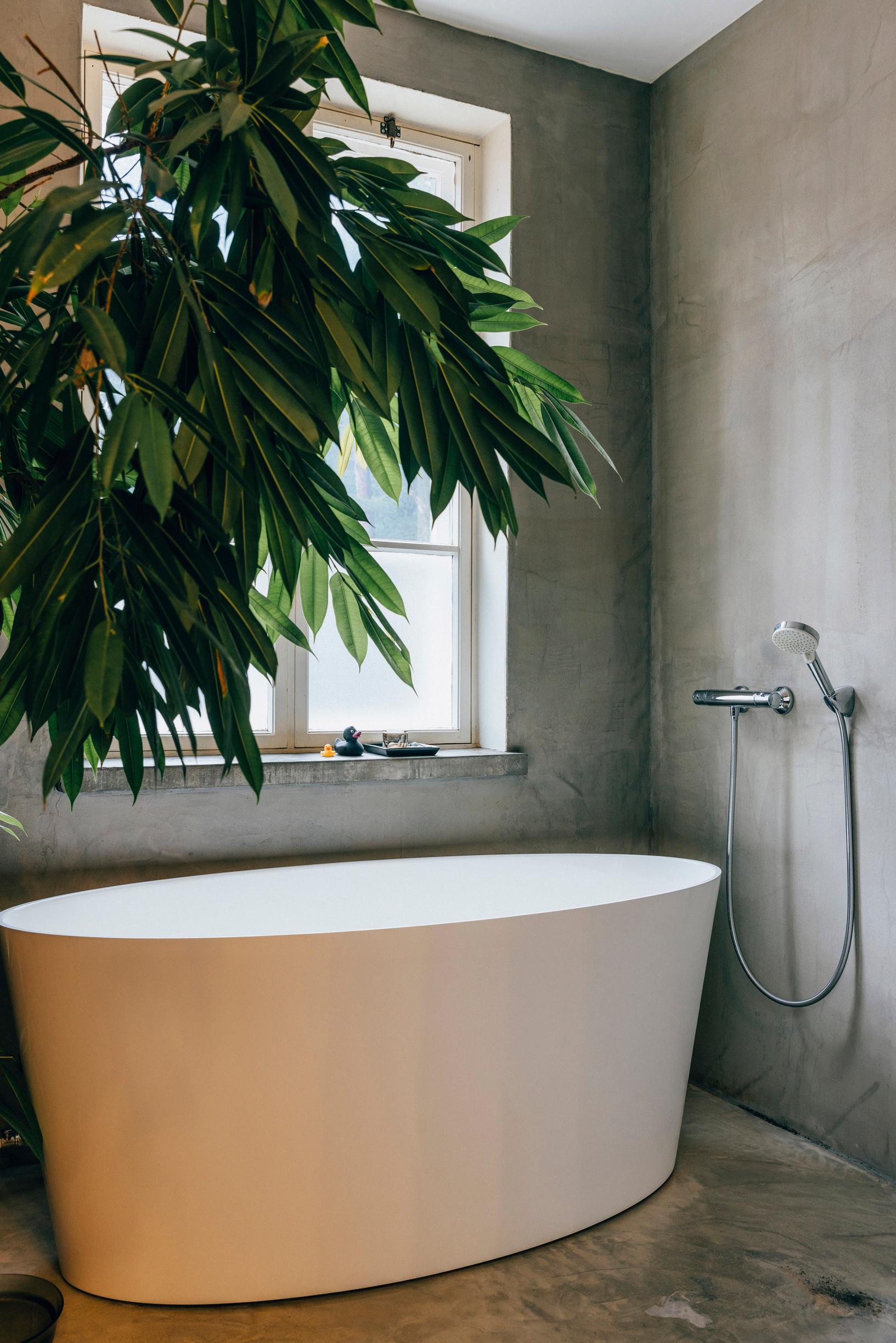
Janita says that they’re not exactly the type who say they love decorating. Their home reflects who they are and how they think. Many of their possessions and furniture have been with them for as long as they’ve been together, or even longer.
The ladder rungs leading to the sleeping loft are one of the few remaining pieces from the factory’s original furnishings.
“Whenever we make changes, we do it so we can preserve its history. If you want something new, buy a new house,” Otto says.
They don’t just talk about respecting history. There’s no longer a lift operator, but the original factory elevator still runs on a lever.
There was once a product warehouse downstairs. You can still see small marks on the floors and walls from that time. Industrial style and personality are easy to spot.
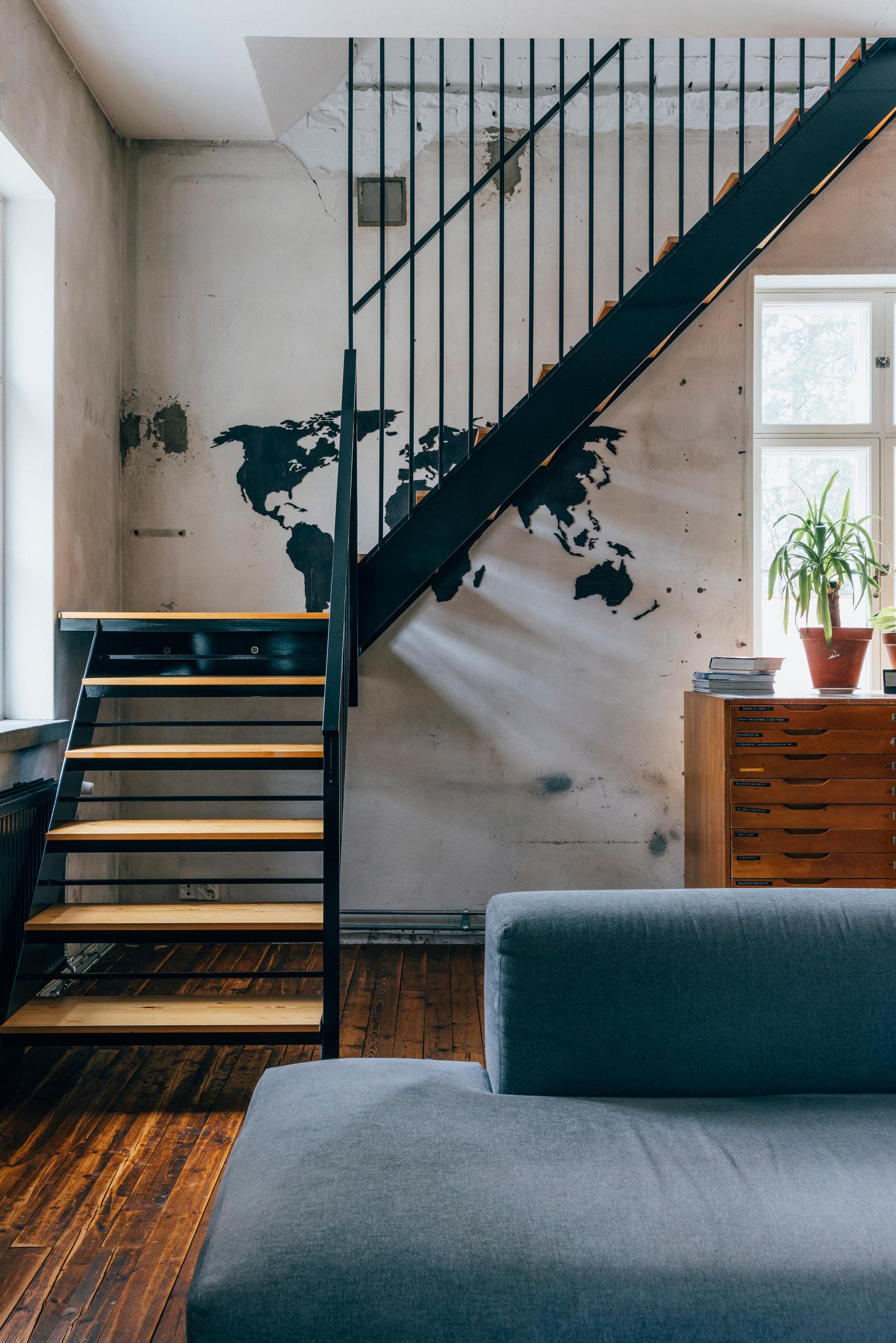
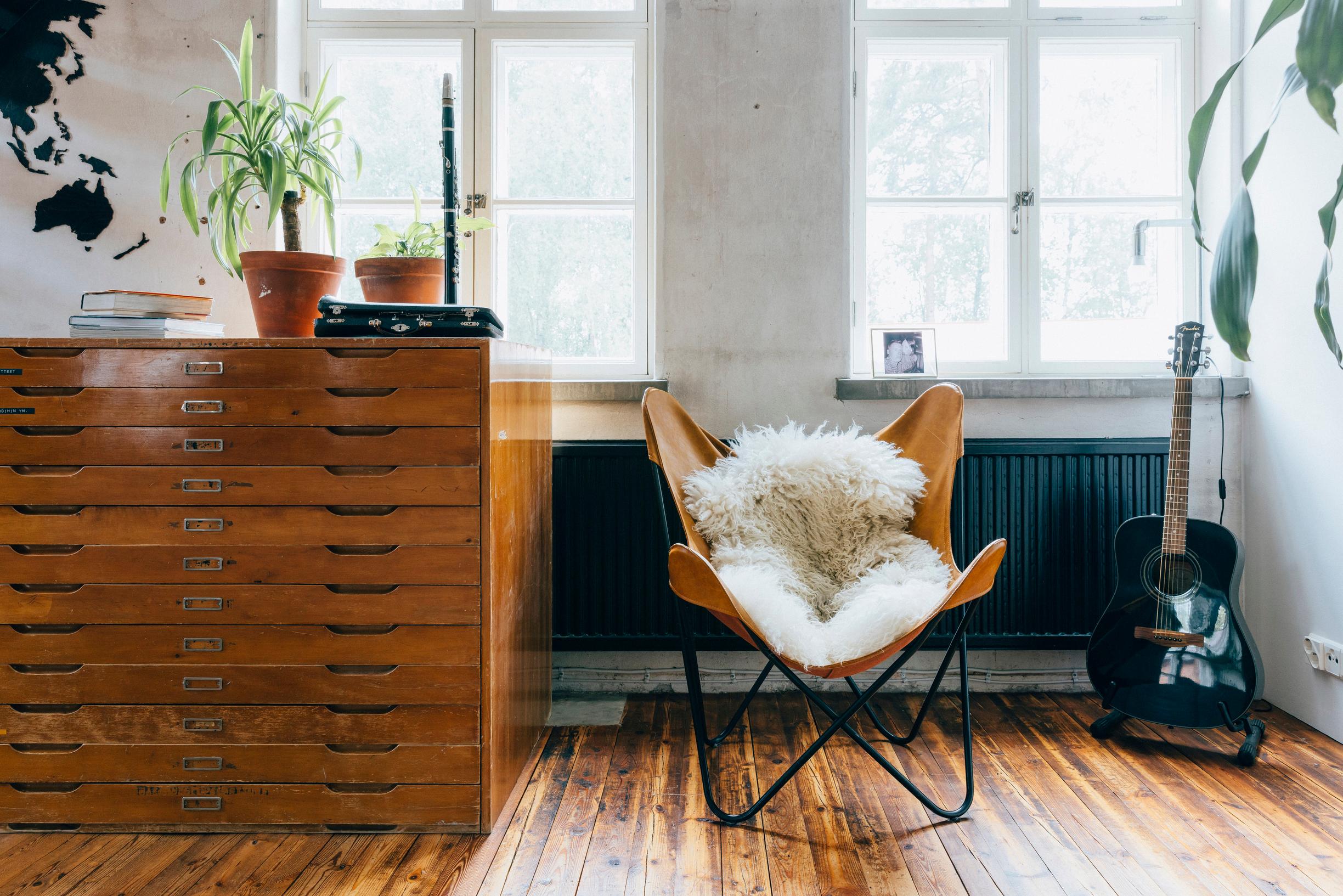
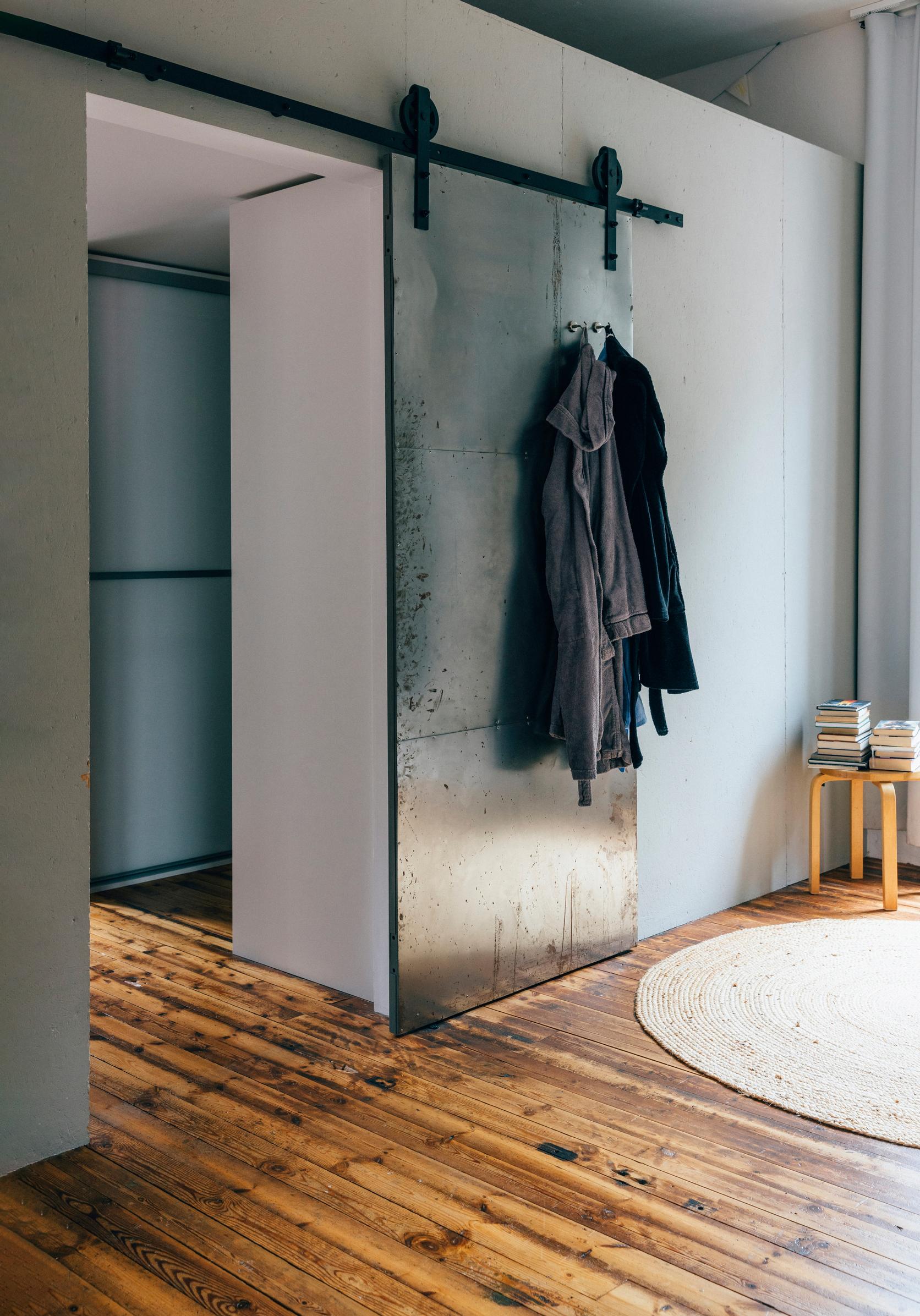
In the stairwell, there’s a slightly altered version of the factory’s old logo. One wall displays a framed red leather skirt produced by the factory. Otto’s mother bought it as a gift. Opposite it is a commemorative collage showing some of the backpacks for which the factory was famous. Locals have shared many memories, which has been wonderful to hear.
“They’ve also wanted to return items that were originally made here,” Janita says.
Otto trusts the building’s use of sturdy materials—wood, brick, concrete, and metal. For many years, it was heated with pellets, but it switched to geothermal heating last fall.
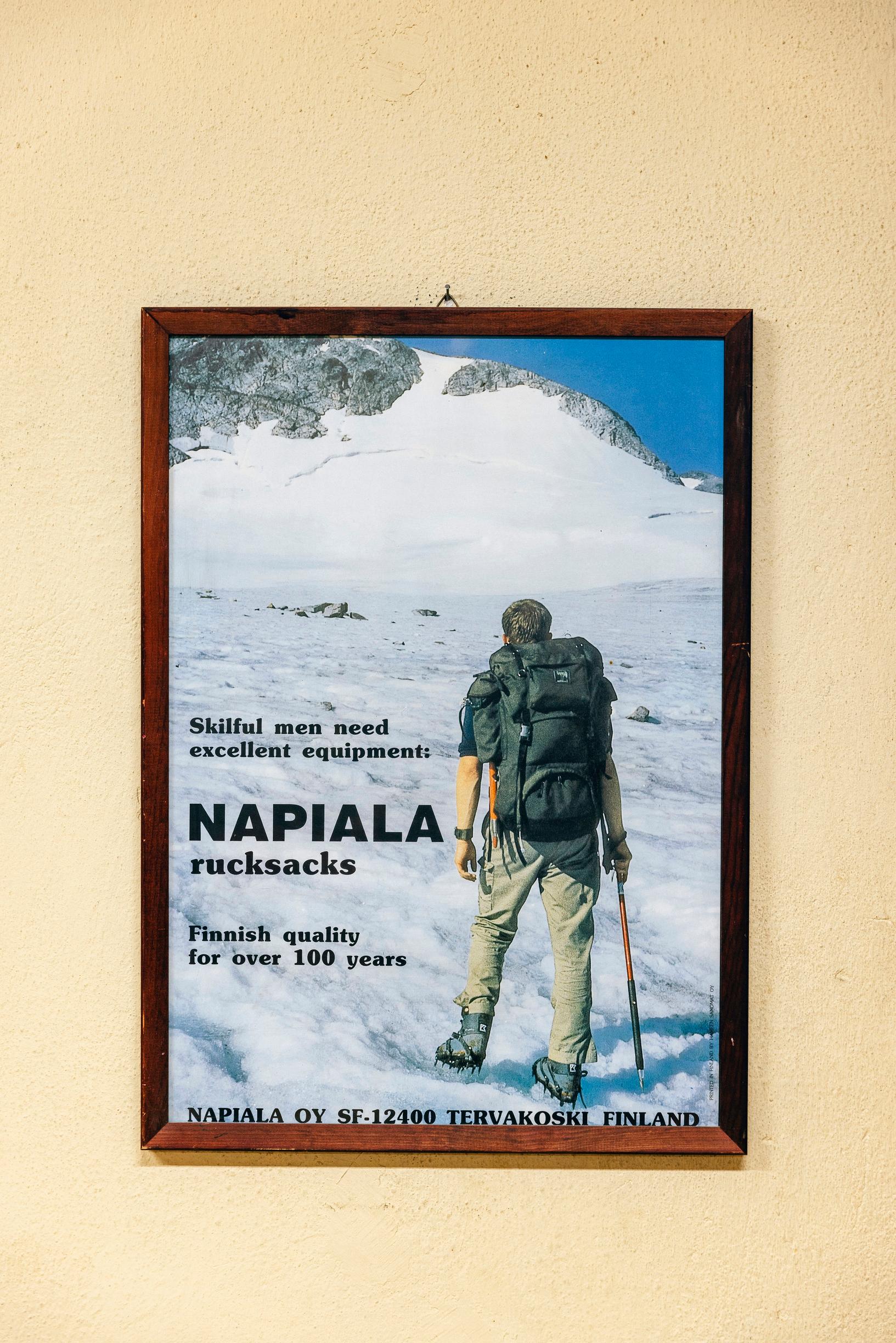
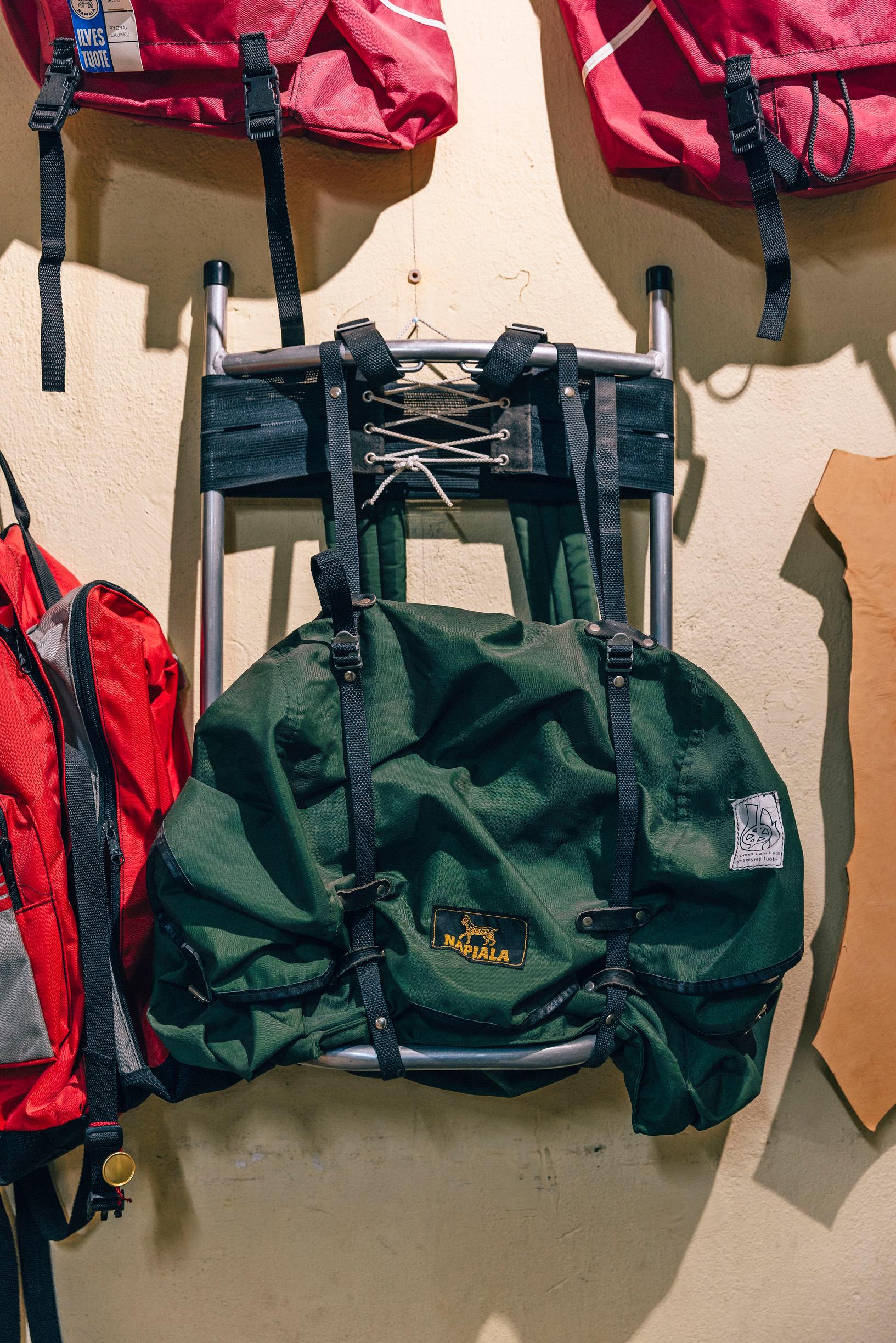
In the pen beside the treehouse sauna, a rooster crows again.
What surprises most visitors are the peafowl wandering the yard, sometimes roosting in the trees. Otto and Janita became interested in these exotic birds while traveling abroad.
On the far side of the yard, three mini pigs share pasture with the sheep. Hani reportedly spent two years as a pet in a small bathroom before being rescued and brought here.
Little by little, Janita and Otto have acquired the factory’s lands and became farmers last year. They harvested their first hay for the sheep from their own fields this past summer.
“We want to do our part for biodiversity and help restore the fields and forests to their natural state,” Janita says.
